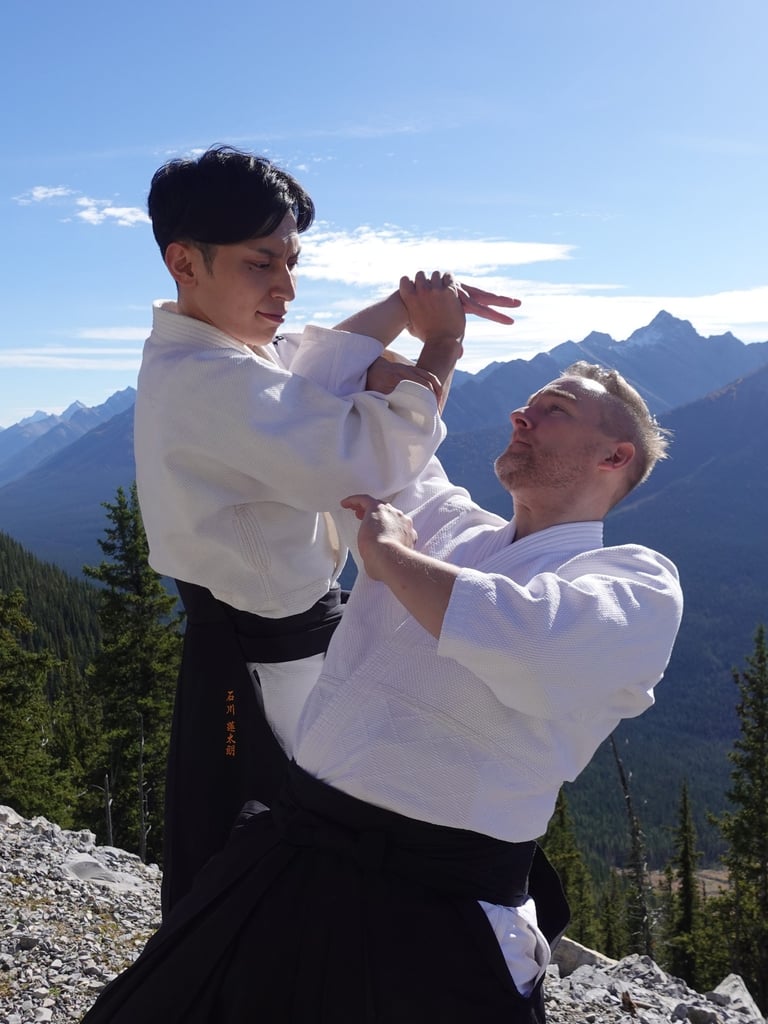Daitō Ryū Aikijūjutsu
What kind of martial art is it?
Daitō Ryū is a system of jūjutsu (unarmed grappling arts) with a strong emphasis on aiki—the principle of blending with and controlling an opponent’s movement, balance, and intent without relying on brute force.
Training includes:
Joint locks and immobilizations (precise manipulations of the wrists, elbows, and shoulders)
Throws and takedowns that use timing, balance-breaking, and subtle body movement rather than strength
Atemi (strikes to vital points) used to unbalance or distract an opponent
Weapons integration, particularly with sword principles (kenjutsu) and body movement from iaijutsu
Because it comes from a samurai context, Daitō Ryū emphasizes control, precision, and decisive technique over large movements or reliance on strength.


History
Daitō Ryū Aikijūjutsu is one of Japan’s most influential classical martial arts (koryū bujutsu). Its roots trace back to the Edo period (1603–1868), where it was practiced secretly in the Aizu domain under the name Oshikiuchi as a form of self-defense for high-ranking samurai. In the late 19th century, Takeda Sōkaku (1859–1943), a skilled swordsman from Aizu, systematized and taught the art widely, blending its jūjutsu with insights from his lifelong martial training. Over his career, he taught thousands of students, including military officers, police, and martial artists who went on to found new traditions such as Aikidō (Morihei Ueshiba).
How it differs from Aikidō
Aikidō, founded by Morihei Ueshiba, evolved directly out of Daitō-ryū but differs in intent and expression.
Daitō Ryū retains the sharpness of a battlefield art: techniques are applied decisively, often with small movements, joint locks, and pins that can cause injury if not controlled. It is highly structured, with hundreds of formal techniques.
Aikidō adapts these principles into a modern martial art with a focus on harmony, personal growth, and non-injury. Movements are often larger and more circular, with greater emphasis on throws rather than joint destruction.
In short: Daitō Ryū is the classical combat art, Aikidō is its modern descendant with a more philosophical and non-violent orientation.
The Lineage We Follow - Yamamoto-ha Daitō Ryū Aikijūjutsu
Our practice follows the teachings passed down from Takeda Sōkaku, the great reviver of Daitō-ryū, through his final uchi-deshi (live-in disciple), Yamamoto Kakuyoshi, and to his successor Nagaō Zen’yū. We preserve and transmit the unified training of sword and jūjutsu (ken-jū ittai)—combining jūjutsu, iaijutsu, and kenjutsu into one path.
Yamamoto Kakuyoshi-sensei, who trained directly under Takeda Sōkaku in his later years, mastered Daitō-ryū Aiki-jūjutsu, Ono-ha Ittō Ryū, and Shintō Seiburyū. He combined these with original innovations such as Daitō-ryū’s unique tegatana (hand-blade) and shumoku-ashi, and went on to found Mugenshintō Ryū Iaijutsu.
Calgary Rakushinkan
カルガリー楽心館
Experience traditional Japanese martial arts training.
© 2025. All rights reserved.
CONTACT
rakushincalgary@gmail.com
(403) 401-8257
